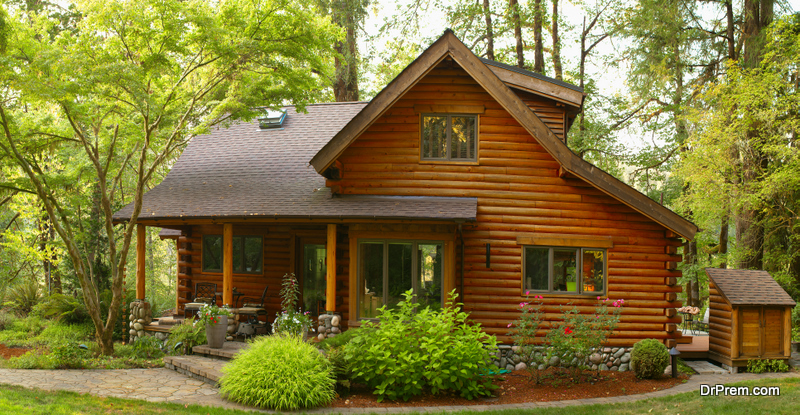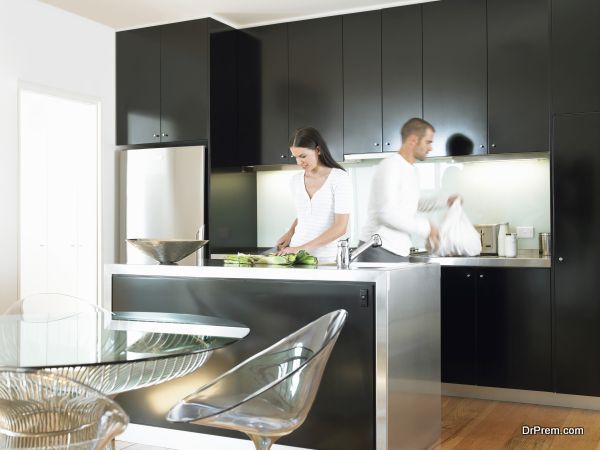Log cabins can be used as a home office, kids’ playroom, garage, or gym and can also be used as second homes or vacation properties. Since log cabins are eco-friendly, cheaper, and provide natural insulation, everyone wants to have a log cabin.
But the real question is “how to choose the perfect log cabin for your needs.” There are different types of log cabins based on the type of construction. There are a few factors that influence the type of construction for a log cabin, which include:
- Purpose of log cabin
- Kind of log cabin kit
- Style of log cabin
Purpose of log cabin
The very first step before choosing the perfect log cabin is to identify the purpose. All the other factors, including size, space, and construction type, depend on the definition of a log cabin. Once you’ve identified your need/purpose, it’ll help you make the following decisions.
If you want a log cabin for your home office then you have to observe how much storage space you need and the number of people you want to accommodate. This will further help to choose the type of construction you want for your log cabin.
Type of log cabin kit
If you want your input in developing your log cabin but don’t want to start building it from scratch, then a log cabin kit is meant for you. Maybe you don’t have enough time, carpentry skills, or experience to notch, peel, and cut the logs. Then you can opt for a log cabin kit and avoid all these hassles in the development process.
More than 25,000 log cabin kits are made every year, so how can you find out which one is best suited for your needs. There are three things to consider while choosing the log cabin kit.
- Choosing the right type of log cabin kit based on notch types, wood types, and finishes
- Finding the right manufacturer who is registered, offers on-site assistance, and guarantee’s the quality
- What’s included in the log cabin kit? Check their packages whether they offer shell only, turn-key packages, or dry-in package
Your budget is also crucial in choosing the right log cabin kit because there is a huge price difference in per sq. foot cost based on the package.
Budget available
Besides everything, you have to make choices based on your budget. Some log cabin construction types may cost less than others, and each construction type gives you a different style of a log cabin.
You need to think about a few things while finalizing the budget. As the total cost of building a log cabin would include the cost of:
- Taxes
- Land acquired
- Interior finish
- Foundation
- Log cabin kit
- Labor charges
As a rough estimate, if you want to build a log cabin using a kit, then the total cost would be around 2-3 times the cost of your cabin kit. For example, if the kit costs around $50,000, the total cost can be estimated at about $150,000.
Style of log cabin
Once you know your purpose, size, and budget, choosing the style of log cabin you want will be much easier. This will help you choose the perfect log cabin with the available constraints for your needs. Now you know all the factors which can help you choose the right type of construction for your log cabin.
Types OF Construction
Each type of log cabin construction is known by how the logs are laid and how they bear weight. There are three common types of log cabin constructions.
- Stacked Construction
- Post & Beam Construction
- Square-Cut Construction
Stacked Construction
In stacked construction, logs are stacked horizontally, forming both the exterior and interior walls without requiring drywall. Grooves are cut from underneath the logs to create a tight seal along with the chinking.
The stacked construction type is notoriously sturdy. It can also be built in under a day once the site is prepared. The downside is that stacked construction can be expensive, and the logs may crack after the log cabin settles.
Post & Beam Construction
Instead of piling logs on top of one another, post and beam construction uses a series of vertical posts and horizontal beams to create a structure that will bear the weight of the property. The remaining walls are then built with cinder blocks, timber, or logs.
Post and beam construction typically uses fewer logs than stacked construction. So, it will be less expensive. The design is also very flexible, allowing both the owners and architects more opportunities for creativity.
Think big bay windows and steeply peaked roofs. Post and beam construction also have fewer settling issues than stack construction. However, this type of construction can take one to two months to build.
Square-Cut Construction
Square-cut, otherwise known as timber-frame, are very similar to the post and beam construction type with one major difference. With post and beam, the cabin features a naturally rounded profile of the logs.
With the square cut cabin, the logs are sawn flat or square to create a more modern construction type that owners typically pair with siding.
Advantages & Disadvantages of Log Cabins
Finally, before choosing the perfect cabin for your needs, you must know the advantages and disadvantages of log cabins. This can also have some influence on your final decision.
Advantages
First and foremost is their aesthetic appeal. Aside from their appealing exterior, log cabins feature internal load-bearing beams, a very sought-after design trait.
Log cabins are also energy efficient and generally more efficient than modern properties. Log cabins are also very strong and can withstand extreme weather events such as hurricanes, earthquakes, and snowstorms.
Disadvantages
The downside is that log cabins are often susceptible to water damage, and some construction types can have issues with settling too. And in general, log cabins require a little more maintenance than your traditional property.
Conclusion
Finally, after reading this article completely, you know everything that needs to be considered before making the final decision. This will help you choose the perfect log cabin for your needs. If you still have any doubts or queries, please let us know in the comment section below, and we’ll help you make the decision.
Article Submitted By Community Writer




